REGENERATIVE ORGANIC CONNECTIONS


HEALTHY LIVING | HEALTHY PLANET FREE
Institute JULY 2023 COLUMBIA EDITION ColumbiaNaturalAwakenings.com
Rodale

2 Columbia Edition ColumbiaNaturalAwakenings.com


3 July 2023

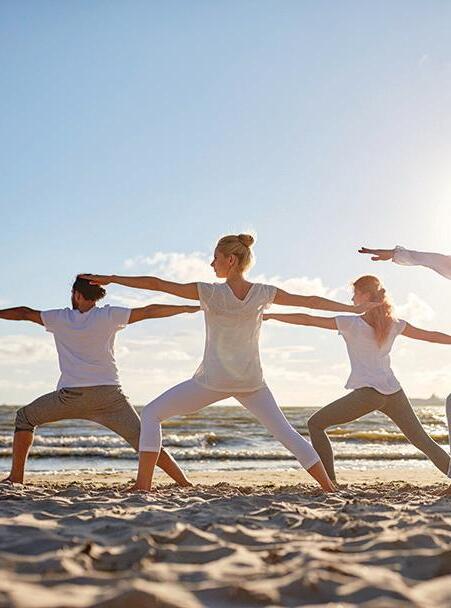
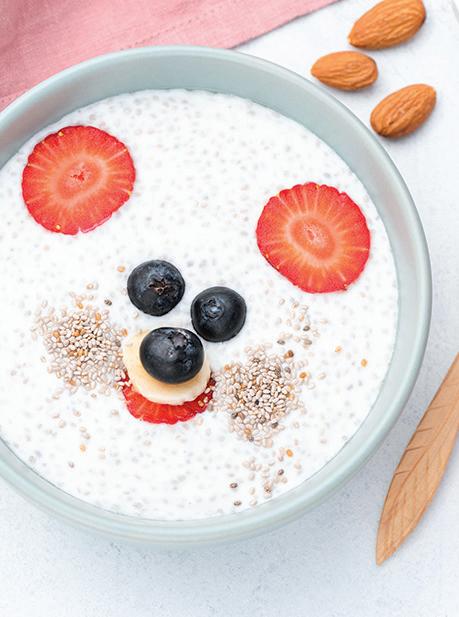

4 Columbia Edition ColumbiaNaturalAwakenings.com Contents DEPARTMENTS 7 inspiration 8 news briefs 13 health briefs 15 global briefs 17 green living 18 wise words 20 conscious eating 27 eco tip 28 healthy kids 30 healing ways 32 natural pet 33 fit body 36 calendar 37 natural directory 7 THE SWEET TAPESTRY OF SUMMER 17 FIGHTING CLIMATE CHANGE IN THE GARDEN Regenerative Techniques for a Healthy Ecosystem 18 ANNE BIKLÉ on the Advantages of Regenerative Farming 20 HUES OF HEALTH Benefits of a Colorful Diet 24 THE MICROBIOME CONNECTION How Soil and Human Health Are Related 28 GUT HEALTH FOR KIDS Clever Strategies for Picky Eaters 30 TOO MUCH HISTAMINE Natural Solutions to an Excessive Allergic Response 32 PROTECTING PETS FROM LYME DISEASE Prevention and Symptom Management Tips 33 GREEN EXERCISE Reconnecting With Nature 18 33 28
Natural Awakenings is a network of natural lifestyle magazine publishers empowering local communities with knowledge, resources and connections to lead healthier lives on a healthy planet.

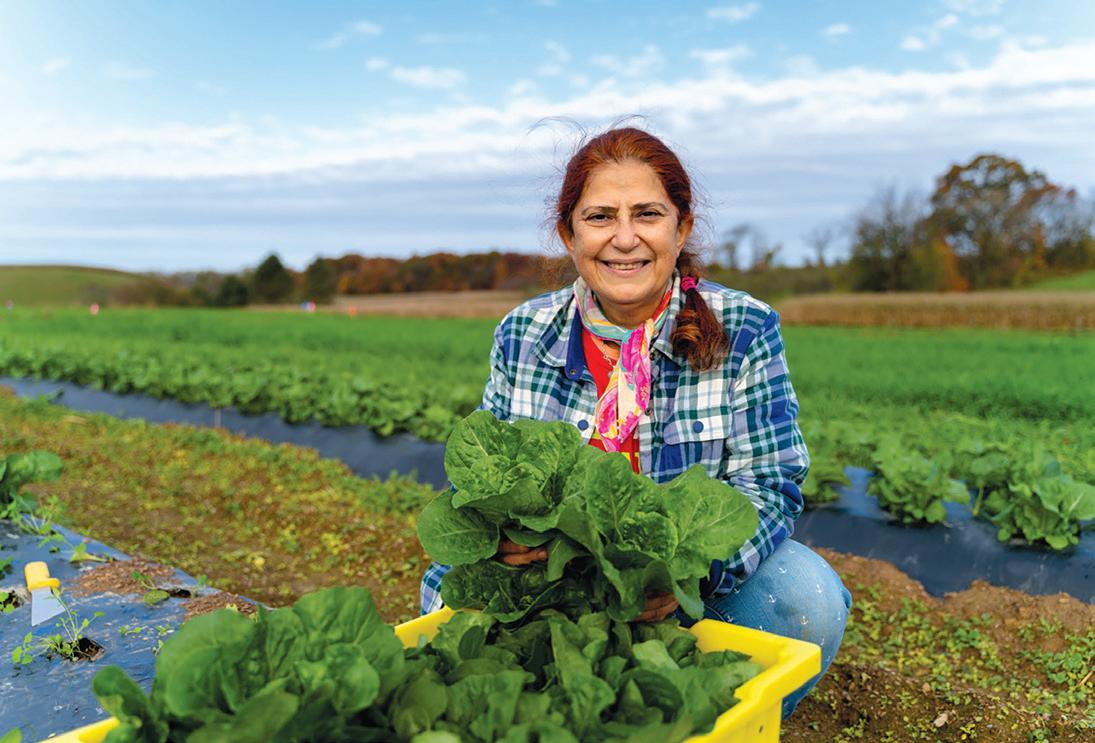
ADVERTISING & SUBMISSIONS
HOW TO ADVERTISE
To advertise with Natural Awakenings, please contact us at 803-309-2101 or email ColaPublisher@ NaturalAwakenings.com. Deadline for ads: the 12th of the month.

EDITORIAL SUBMISSIONS
Email articles, news items and ideas to ColaPublisher@ NaturalAwakenings.com. Deadline for editorial: the 10th of the month.
CALENDAR SUBMISSIONS
Submit Calendar Events at ColumbiaNaturalAwakenings. com or email to ColaPublisher@NaturalAwakenings.com Deadline for calendar: the 10th of the month.
NATIONAL MARKETS
Advertise your products or services in multiple markets! Natural Awakenings Publishing Corp. is a growing franchised family of locally owned magazines serving communities since 1994. To place your ad in other markets call 239-206-2000. For franchising opportunities call 239206-2000 or email Natural Awakenings@KnoWEwell.com.


5 July 2023 32 17 24
PUBLISHER Annette Carter Briggs
EDITOR Sara Gurgen
DESIGN & PRODUCTION
CONTRIBUTING WRITERS
SALES & MARKETING
WEBSITE
Flip-Flops, Therapy and Oceans …
Kristina Parella
Billy Briggs
Odell Williams
Kristi Antley
Annette Carter Briggs
Kristina Parella
Billy Briggs
CONTACT US
PO Box # 2812 Columbia, SC 29202 Email ColaPublisher@NaturalAwakenings.com
Annette Briggs Ph: 803-309-2101 Website ColumbiaNaturalAwakenings.com
SUBSCRIPTIONS
Subscriptions are available by sending $24 (for 12 issues) to the above address.
NATIONAL TEAM
CEO Kimberly B. Whittle
COO/Franchise Sales



Joe Dunne
National Editor Sandra Yeyati
Editor Brooke Goode
Copy Editor/Proofreader
Design & Production
National Advertising
The month of July is here—one of my favorite months of the entire calendar year. From patriotic Independence Day celebrations to honor those that serve and sacrifice to protect our cherished freedoms to planned vacations packed with summer beach fun, the arrival of July usually signals the much-anticipated transition from the mundane grind of the world of work to the “no set agenda” world of playful pleasure. Yes … it’s time to sloooowwwww it down just a bit and enjoy life; we’ve worked hard, now let’s play even harder!
I always look forward to trading my high-heeled shoes for flip-flops and my day planner for no plan at all. And where will you find me? Of course, reclining in my favorite place on God’s green Earth—the beach—to soak up some sunrays while I hurry up and do nothing at all. The ocean is a great counselor, comforter and therapist with the very best office décor! The world’s oceans are priceless; however, we (as a human race) often treat them as if they aren’t worth a penny. We cannot exist without them, but they can without us—think about that while you enjoy the view. Here are some sobering facts to consider while you join me on the shoreline.
According to research and statistics, more than 817 animal species around the world are impacted by ocean pollution—a figure that reflects a 23 percent increase in the last five years alone. Moreover, plastics are the most common pollutants found in the world’s oceans today; and they are particularly harmful to the environment due to the fact that they are often mistaken for food by marine animals and birds and because plastics do not break down and degrade easily. According to a study done by the University of Georgia, each year 18 billion pounds of plastic trash enters into the Earth’s oceans.


Melanie Rankin
Gabrielle W-Perillo
Lisa Doyle-Mitchell
CONTACT US
Natural Awakenings Publishing Corporation
350 Main Street, Suite 9B
Bedminster, NJ 07921
Ph: 239-206-2000

NaturalAwakenings@KnoWEwell.com
© 2023 by Natural Awakenings. All rights reserved. Although some parts of this publication may be reproduced and reprinted, we require that prior permission be obtained in writing.
Natural Awakenings is a free publication distributed locally and is supported by our advertisers. Please call to find a location near you or if you would like copies placed at your business.
We do not necessarily endorse the views expressed in the articles and advertisements, nor are we responsible for the products and services advertised. Check with a healthcare professional regarding the appropriate use of any treatment.
Here is another cold bucket of wet research reality: At any moment, as much as 25 trillion pieces of plastic debris float in the oceans killing more than 1 million sea birds and 100,000 marine animals from plastic entanglement and ingestion. Some of the most common items found in coastal cleanups around the world include food wrappers, plastic cigarette butts, plastic bottle caps and beverage bottles, and plastic straws and drink stirrers. The fact is that the choices we (as humans) make each day impact the environment, including our oceans. Activities such as agricultural practices; coastal tourism; port, harbor and urban development; mining; fishing; aquaculture; and manufacturing, among others, can all be very problematic.
I don’t want to take the fun out of summer and forecast heavy rain on otherwise beautiful, sunny July days; however, in light of the obvious, we (and that means you too) must do something. Let’s take the initiative and make more sustainable lifestyle choices with regard to what we purchase; the activities that we engage in; and the respect, gratitude and care that we display toward our oceans. Let’s learn the importance of and practice environmental stewardship. In a phrase: reduce, reuse and recycle!
Enjoying the view,
Annette Carter Briggs, Publisher

6 Columbia Edition ColumbiaNaturalAwakenings.com
Natural Awakenings is printed on recycled newsprint with soy-based ink. HEALTHY LIVING HEALTHY PLANET COLUMBIA EDITION Natural Awakenings Magazine is ranked 5th Nationally in CISION’S® 2016 Top 10 Health & Fitness Magazines letter from publisher
The Sweet Tapestry of Summer
by Marlaina Donato
July is a heady mix of peak temperatures, sustenance from the soil and inspired invitations to make lasting memories. For gardeners, it is a lilting time of fruition in between rounds of hard work when one’s efforts can be harvested, eaten and appreciated. Summer’s apex brings wildflower tapestries woven with cricket-song and evenings punctuated by rolling thunderstorms, but it also can be a time for us to take a deep dive into the miracle of interconnectedness.

Visiting the local farmers market is an opportunity to be mindful of all that goes into our shopping bags and bellies: rain, sunlight, nitrogen-rich snowmelt and the vital fertility of topsoil. We can see everyday people in a different light, especially Earth-conscious farmers who choose to be birthing partners of the land.
Taking a walk outside can remind us that no life would be possible without the near-magical, unseen mycelium network beneath our footsteps. Summer’s delicate balance of elements ensures abundance, and we have a sacred opportunity to be part

of that equilibrium. Each of us is a link in the chain of humans co-creating within the symbiosis of all other living things. Will we take away from this balance or add to it?
Adding to it does not require hours of time or money, but the motivation to make simple decisions for the greater good, such as leaving part of the lawn to grow for the winged ones or choosing an eco-friendly refillable water bottle over single-use plastic. Showing a child how to keep a nature journal can foster lifelong connections with the Earth. We do our part when we joyfully become part of the landscape—witnessing, observing and allowing nature to go about her business. Making time for languid appreciation contributes to self-nourishment, something that is also vital to the whole. How many avian voices can you hear at sunset? How many colors can you find in a changing mural of clouds? The season of plenty offers a harvest of beauty.
7 July 2023 inspiration
maria t hoffman/AdobeStock.com
Marlaina Donato is an author, visionary painter and composer. Connect at WildflowerLady.com.
ICRC Hosts Slip, Slide & Splash!
n Saturday, July 22, from 11 a.m. to 2 p.m., the Irmo Chapin Recreation Commission (ICRC) is hosting its Slip, Slide & Splash! event at Melvin Park, located at 370 Eptings Camp Road, in Chapin. The fun-filled activities will include inflatable water slides, access to the splash pad, a new toddler area and food trucks. Participants must be at least 3 years of age and must have an ICRC-issued wristband to attend. Due to the popularity of this event, those interested in attending should either register online or at Crooked Creek Park prior to the event.

The presenting sponsor is the Victoria Ares Agency – Allstate. Other event sponsors include the Hood Team – Coldwell Banker Realty, O’Leary Orthodontics, HIS Radio 92.1, Zestos of Chapin, Superior Auto Sales and Mid Carolina Electric Co-Op.
For more information, including cost, call 803-345-6181 or visit icrc.net/event/slip-slide-splash. See ad, page 29.
A Positive Path for Spiritual Living
From Rev. Dan Beckett

OWe seek above all to see the presence of God in each and every person. Our church’s motto is “A Positive Path for Spiritual Living.” I have always loved that description because it gets right at the core of who we are as spiritual beings having a human experience. And in doing so, looking for (and finding!) the good in all things. Now, looking for the good in all things does not mean that we can call all things “good.” A quick look around the world tells us that there are things happening that we could not call good; but—and this is critically important—when we look for the good in anything, we can find it somewhere in there. “Seek and ye shall find,” said the master teacher.
An example from my own life is my addiction recovery journey. Drinking oneself into the hospital could hardly be called “good”! Yet, if that’s what it took to wake me up spiritually, then there’s some good in it for sure. And now I have the Spirit of Recovery podcast to help others on their journey while also helping myself continue to live a Spirit-centered life. And I’m grateful for it all. If you want to find others who live this way every day, I invite you to join us Sunday mornings at 11 a.m. for a celebration of the power of Spirit in our lives through meditation, music and message.
For more information, visit UnityOfTheMidlands.org. See ad, page 19.

ICRC Hosts Paddle and Pint
OnFriday, July 7, from 6 to 8 p.m., the Irmo Chapin Recreation Commission (ICRC) is hosting its Paddle and Pint event at Saluda Shoals Park. For adults ages 21 and up, participants will enjoy the scenic view while paddling the Lower Saluda River, fully surrounded by beautiful scenery and S.C. wildlife. After spending an hour on the water, guests will then have the opportunity to sample delicious craft beers at the River Overlook. Boats and all necessary equipment needed will be provided. As a note, the trip is dependent upon weather and river levels.
Cost: $47 per person. Location: 5605 Bush River Rd., Columbia. For more information, call 803-772-1228 or visit icrc.net/event/paddleand-pint-paddle-and-craft-beer-tasting-2. See ad, page 29.

8 Columbia Edition ColumbiaNaturalAwakenings.com
community news
The Spiritual Fusions Psychic and Holistic Expo is Back!
Bring a friend and explore the possibilities! Spiritual Fusion’s much-anticipated two-day event features astrologers, holistic practitioners, intuitive counselors, reiki, psychics, aura photography, henna and more! Come and experience powerful and insightful sessions for ONLY $20. Spiritual Fusion’s unique mission is to provide a powerful experience that enables individuals to discover new ways to nourish their souls and enrich their lives at an affordable price.

The two-day event will be hosted on July 29 and 30 (Saturday and Sunday), from 10 a.m. to 6 p.m., at the Columbia Metro Center, located at 1101 Lincoln Street. Admission is $9 (children 12 and under are free).
Participants can also enjoy FREE lectures and raffles. A wide array of vendors will be on-site offering crystals, jewelry, healing tools, art and many exciting opportunities for personal growth, self-improvement and empowerment. Come and receive the healing and life guidance you’ve been searching for in a fun, festive, energetic and high-vibration environment. There’s truly something for everyone. It’s time for life transformation!
For more information, visit SpiritualFusions.com. Also visit Facebook.com/ SpiritualFusions or Instagram.com@ SpiritualFusions. See ad, page 19.

2023 Wild Summer Nights Online Auction
It’s time to get wild! From Thursday, July 13, starting at 9 a.m., through Saturday, July 15, ending at 8 p.m., the South Carolina Wildlife Federation (SCWF) is hosting its Wild Summer Nights Online Auction. Proceeds raised from the auction go to support SCWF’s mission to conserve and restore wildlife and habitat through education and advocacy. For those interested in providing donation items for the auction, contact SCWF’s Director of Development and Events Angi Fuller Wildt at 803-256-0670 or Mail@scwf.org.
For more information, call 803-256-0670 or visit www.scwf.org/events.

9 July 2023
ICRC Hosts Cooking with Mom
On Saturday, July 29, from noon to 2 p.m., the Irmo Chapin Recreation Commission (ICRC) is hosting its very special Cooking with Mom experience at Seven Oaks Park, located at 200 Leisure Lane, in Columbia. For chefs ages 7 and up, this very interactive cooking class is designed to bring parents and kids into the kitchen together for a fun-filled, healthy experience.

Cost: $65 (one parent and one child). For more information, call 803-772-3336 or visit icrc. net/event/%C2%A0cooking-mom.
Expedited Collection Services Offered for Student Move Outs

The City of Columbia Solid Waste Division is offering expedited collection services for students that are moving out through July.*
Residents are first and foremost encouraged to be responsible and rethink their waste. Before tossing items to the curb, students are asked to assess the quality of the items. Items that are in good condition listed below can be donated to a local nonprofit in need. Residents and neighbors can also contact the Solid Waste Division’s main office at 803-5453800 to report a pile ready for collection, which should be picked up promptly. The list of acceptable items includes clothing, dishes, kitchen tools, utensils, furniture and bedding. Other items include storage bins, artwork or wall hangings, mops, brooms, cleaning tools and bulky plastic items (i.e., coolers, buckets or bathroom garbage pails).
*Note: This is for residential homes only. Students and residents living in apartment complexes are encouraged to donate unwanted items.
SCDHEC and Take Action SC Host 'Unconference' Experience
On Thursday, July 13, from 8 a.m. to 4 p.m., the South Carolina Department of Health and Environmental Control (SCDHEC) and Take Action SC are hosting their annual environmental educators’ summer workshop titled the Unconference Experience at the R2I2 Conference Center, located at 763 Fashion Drive, in Columbia. The unique and innovative learning experience will include learning labs, which are designed to teach educators how to integrate environmental lessons into the classroom learning experience. The entire session is driven by attending participants and serves as a great networking opportunity.

This year’s workshop will include keynote Speaker Kirkland Smith—a popular artist who has been creating contemporary assemblages using everyday disposable materials. Smith emphasizes the importance of reducing, reusing and recycling. SCDHEC will provide educator lesson demonstrations on natural resources, landfill processes, composting, recycling contamination and more. Attendees will also have the opportunity to tour the R2I2 Student Innovation Center's solar array. Workshop participants will receive lunch, a curriculum supplement, a Take Action SC Tervis tumbler, a Take Action SC multi-recycler bin, a motherboard clipboard and more.
Cost: $10 (nonrefundable). For more information, visit TakeActionSC.org.

10 Columbia Edition ColumbiaNaturalAwakenings.com community news
Sunset on the Shoals –Paddle and Wine Tasting

Are you ready for a great time on the water? On Friday, July 21, from 6 to 8 p.m., the Irmo Chapin Recreation Commission (ICRC) is hosting its Sunset on the Shoals event at Saluda Shoals Park. For adults ages 21 and up, participants will enjoy an interpretive onehour paddle tour on the Saluda River while learning about the rich and unique history of the area. The tour will be followed by a wine tasting. Boats and all necessary equipment needed will be provided. As a note, the trip is dependent upon weather and river levels.
Cost: $47 per person. Location: 5605 Bush River Rd., Columbia. For more information, call 803-772-1228 or visit icrc.net/event/ sunset-shoals-paddle-and-wine-tasting-4. See ad, page 29.
KMB Hosts Lakeside Litter Sweep

Keep the Midlands Beautiful (KMB) is hosting its Lakeside Litter Sweep event on Saturday, September 16, around areas of Lake Murray. Local Midlands area residents are welcome to join more than 20 event partners and approximately 250 volunteers coming together to clean up Lake Murray's shorelines, islands and water while having a great time. Volunteers can choose to stay onshore, utilize their own boats or sign up for a free pontoon boat ride to the islands designated to be cleaned. Preregistration is required.
For more information or to register, call 803-733-1139 or visit KeepTheMidlandsBeautiful.org.


11 July 2023
S.C. Energy Office Now Accepting Mini-Grant Submissions
The S.C. Energy Office will begin taking applications for mini-grants on Saturday, July 1. The U.S. Department of Energy provides the Energy Office with funds to support high-impact competitive demonstration projects in the areas of energy efficiency, renewable energy, and clean transportation. As a part of the mini-grant competitive application evaluation process, the Energy Office will utilize a list of grant criteria. Applicants are strongly encouraged to address the applicable criteria with regard to each project when describing/defining it in the project overview section on the application.
Review and Award Process Applications will be reviewed by the Energy Office and the Energy Advisory Council. Once a project is selected for funding, the Energy Office will send recipients a grant award agreement. Funds will be disbursed via reimbursement after completion and monitoring of the project by the Energy Office. Applications are reviewed based on the following general criteria: Expected energy savings and simple payback period; visibility of the project; ability to complete the project within the specified timeframe; applicant’s contribution to the project, including the applicant’s proposed post-installation evaluation of impact; and the educational and/or demonstration value of the project.
The list of eligible applicants includes state agencies, local governments, public colleges, universities, technical colleges, K-12 public schools, and 501(c)(3) nonprofit organizations. The maximum grant award amount is $10,000. Please note that, due to limited funding, the grant review process is highly competitive. Only a small number of applications will be selected to receive a grant award. Applications are due by Tuesday, August 1 (close of business—5 p.m. EDT). An application must be completed and submitted for consideration.


For more information or to apply, contact Rick Campana at RCampana@ors.sc.gov. Also visit Energy.sc.gov/incentives/grants.
EEASC Now Accepting Board Member Applications



Are your ready to take EEASC to the next level? EEASC is now accepting applications and nominations for board of director positions. Openings for treasurer, vice president and at-large board members are available. Applicants must be S.C. residents, at least 18 years of age, and a member of EEASC for at least one year. Applications are due by Friday, July 14. Each service term lasts two years and officially begins in September.
For more information or to apply, email Sarah Whitmire, nominating committee chair, at Sarah@ConesteePreserve.org.
12 Columbia Edition ColumbiaNaturalAwakenings.com community news Services & Products to Help You Create a Health-Full Life ABOUTYOURHEALTHSC.COM 120 KAMINER WAY PKWY, SUITE J - COLUMBIA, SC 29210 Balance for Life About Your Health 803-798-8687 By measuring the rate, rhythm and tone of the heart, the nutritional needs of the heart can be discovered, thus highlighting a way to bring the heart back into balance. Heart Sound Recorder Service available at About Your Health. Find out more about The Heart Sound Recorder at ABOUTYOURHEALTHSC COM Call to make your appointment: 803-798-8687
Lack of Sleep Can Be Dangerous. Literally.
The importance of sleep cannot be overstated. According to a study from the AAA Foundation for Traffic Safety, an individual is twice as likely to get into a car accident when operating on six to seven hours of sleep compared to a full eight hours. Moreover, if a person sleeps fewer than five hours, the chances of that individual being involved in an accident quadruple. This is because one’s reaction time slows greatly when the brain is not fully rested.
Adequate sleep can also increase exercise performance. However, the lack of sleep can have a negative effect on one’s strength and power. Did you know that proper sleep can improve an individual’s memory? Even though sleep gives the body the rest it needs, the mind can still be hard at work by processing and consolidating one’s memories from the day. An individual’s mind can create false memories due to the lack of sleep. Research reveals that people that get less sleep tend to be heavier, eat more, carry a higher body mass index, and are more likely to be diabetic. “Consistent sleep of seven hours a night is what’s recommended for adults just for daytime
functioning for staying on task, being alert for the day, being able to concentrate without being moody or tired during the day,” says Dr. Kohler.

One can improve one’s sleep quality by creating an effective nighttime routine designed to get one’s mind and body relaxed. This routine includes meditation, not looking at one’s phone or tablet after 7 p.m. (unless one has blue blocker glasses), and keeping one’s room at 60 to 68 degrees while sleeping.
For more information, contact Kristen Turpen (owner/operator of Radiant Holistic Healing) at 839-207-0057 or RadiantHolisticHealth@ hotmail.com. See ad, page 39.


13 July 2023
health briefs
Close Relationships May Influence Physical Well-Being
A new study published in Social Psychological and Personality Science has found that a person’s close relationships may either benefit or undermine physical health. The three-week study involving 4,005 participants looked at how both positive and negative relationship experiences affect the body, and how daily fluctuations in those interactions may influence changes in well-being, as reflected in self-reported stress levels and coping abilities, as well as blood pressure and heart rate reactivity biomarkers.

The researchers observed that people with more positive experiences and fewer negative ones reported lower stress, improved coping skills and better physical functioning. They also noted that ups and downs in negative relationships were especially predictive of outcomes like stress, coping and overall systolic blood pressure.
Seniors Want Fewer Prescriptions
Effects of Cannabis Use Before and After Surgery
In January 2023, the American Society of Regional Anesthesia and Pain Medicine published guidelines recommending that all patients undergoing anesthesia be screened and questioned about cannabis use, including how much and how often they use, how they take it and when they last used it.

One of the largest studies on the effects of cannabis use on sedation, published in the Journal of Osteopathic Medicine, looked at 250 patients undergoing an endoscopy while under anesthesia. Those that reported regular cannabis use required significantly higher doses of anesthesia than nonusers. Another study, published in the journal PLOS ONE, found that daily cannabis users required a higher dose of sedatives prior to an endoscopy than weekly or monthly users.
On a related note, a 2018 study published in the journal Patient Safety in Surgery reported that marijuana use may interfere with painkillers after surgery. The study looked at 261 trauma center patients and concluded that marijuana use, especially chronic use, may affect the pain response to injury and require higher doses of opioids for pain management.
In a new National Poll on Healthy Aging by the University of Michigan involving adults aged 50 to 80, the vast majority of respondents expressed an interest in cutting back on prescription medications. Eighty percent would be willing to stop taking one or more drugs if their healthcare provider said it was possible, and 26 percent had already stopped taking at least one drug they had been taking for more than a year. When asked which meds they would be most interested in stopping, 43 percent named their heart disease pills for high blood pressure or high cholesterol, 13 percent mentioned diabetes medicines and 10 percent included pain management prescriptions. These results reflect a growing trend dubbed “deprescribing”. According to Deprescribing.org, a researcher-led online resource, it is the planned process of reducing or stopping medications that may no longer be of benefit or could be causing harm. The goal is to reduce medication burden or harm while improving quality of life. Seniors interested in cutting down on the drugs they are taking should consult their healthcare provider to ensure it is safe and helpful to do so.

14 Columbia Edition ColumbiaNaturalAwakenings.com health briefs
Photo by 13MoonsPublishingServices.com
artit/AdobeStock.com
CGN089/ShutterStock.com
Pilot Program Reveals Benefits of Four-Day Work Week
The nonprofit 4 Day Week Global conducted a six-month pilot of more than 2,900 workers from 61 companies in the United Kingdom from June to December 2022 in which the work week was reduced from a standard 40 hours to 32 hours for the same pay and benefits. At the end of the six-month trial, 39 percent of employees reported less stress and 71 percent expressed lower levels of burnout. Anxiety, fatigue and sleep issues also decreased, while mental and physical health improved. Sixty percent found a greater ability to balance work with home-based responsibilities, and 62 percent found it easier to balance work with social life. Employees were also more satisfied with their finances, relationships and time management.
Company revenue stayed broadly the same over the trial period, rising by 1.4 percent on average. Companies also saw improvements in hiring, absenteeism and resignations, with staff turnover dropping by 57 percent over the trial period. Additionally, 63 percent of businesses offering a four-day week found it easier to attract and retain new talent.

global briefs
Colombia Protects Its Birds

Repairing the Planet’s Lungs
Colombia has the most bird species in the world—1,966 registered species, or 20 percent of all birds worldwide— and has updated its strategy for protecting this rich avian life, affecting all birds that inhabit the country at some point in their annual life cycle. The goal is to conserve and sustainably manage bird diversity, habitats and ecosystems by the generation of knowledge, scientific research and its application, the active participation of different sectors, policy and planning. The strategy focuses on 11 different Colombian ecosystems from the high Andean forests to savannas, grasslands and coastal areas.
This exhaustive process in the renewal of Colombia’s avian protection strategy involved more than 30 workshops and 2,000 people from every region of the country. Input from indigenous peoples and others generated practical conservation actions in their territories, as well as ancestral knowledge and an appreciation for the special connections these communities have with birds in their daily lives, resulting in a strategy that prioritizes the relationships between people and birds.
The oceans, sometimes called the lungs of the Earth, have absorbed 30 percent of carbon dioxide (CO2) emissions since the Industrial Revolution and captured 90 percent of the related excess heat. Seawater stores about 150 times more CO2 than air. Unfortunately, absorbing all that greenhouse gas has damaged sea life.

Engineers from the University of California Los Angeles (UCLA) have developed a process to cleanse the seawater of CO2 so it can store greater amounts of greenhouse gases. The process sends an electric charge into seawater flowing through tanks on a barge. The charge sets off chemical reactions to trap the greenhouse gas into a solid mineral, which is then deposited on the ocean floor, completing the cleansing process.
The engineers expect to design larger facilities based on the data obtained from their test sites in Los Angeles and Singapore and have commercial sites removing millions of tons of CO2 per year by 2025. The UCLA scientists estimate that 1,800 facilities would be needed to capture 10 billion tons of atmospheric CO2 annually beginning in 2050, thereby limiting the global temperature rise to 1.5 degrees Celsius.
15 July 2023
Flamingo ImagesAdobeStock.com
Artem Pachkovskyi/ShutterStock.com
JAndresCastillo/ShutterStock.com
Saving the Fading Night Sky
Solar Community Hubs

The Smithsonian National Museum of Natural History "Lights Out" exhibit, in Washington, D.C., is helping people understand that light pollution is a global problem with broad impact. The effects of light pollution go beyond our diminishing view of the stars; it also impacts ecosystems and cultures on Earth.
The exhibit features more than 100 photographs, nearly 250 objects, a history of human-made light, interactive experiences, tactile models and a theater program to discover why dark nights matter, rekindle a connection with the night sky and consider how much light at night is enough.
Astronomers rely on light, both visible and invisible, to understand celestial bodies, and their view of the universe has become increasingly obstructed by artificial light. Biologists have observed light pollution’s toll on plants and animals—from harming coral reefs’ moonlight-triggered reproduction to bats’ ability to pollinate flowers and the grim consequences of disoriented migrating birds. Another area of the exhibition presents people’s ancient and modern-day connections to the night sky through photographs, stories and cultural items.

Visitors also learn about simple but meaningful actions they can take to reduce light pollution, such as aiming outdoor lights downward and using the dimmest settings.
Nearly half of the world’s population has no access to the internet. Dell Technologies, in partnership with Computer Aid International, is addressing the gap for people that might benefit the most. They convert old shipping containers into customizable, solar-powered internet centers, called “solar community hubs”, that connect community members to the digital world. The hubs are well-lit, well-ventilated classrooms that use energy-efficient Dell technology and air-cooled servers. Each hub supports up to 40 people at a time and offers up to 20 users a wireless connection to learning materials.
The hubs provide digital skills to further education and open economic opportunities for the local community; allow micro and small enterprises to create jobs; and enable financial sustainability by offering services and products that go beyond education, such as telemedicine.
The first hub was placed in the Brazilian Amazon town of Boa Esperança in March 2022. Dell and the Foundation for Amazon Sustainability also installed equipment, including drones and environmental monitors, to track deforestation in the area. During the first week of March 2023, more than 200 alerts about tree loss were posted from Boa Esperança. Three hubs currently exist in Brazil and South Africa, and Dell will soon add two hubs in Egypt that are focused on career and life skills, as well as another in Australia, centered on preserving and protecting Aboriginal art and culture.

COMING IN THE AUGUST ISSUE
16 Columbia Edition ColumbiaNaturalAwakenings.com
photo courtesy of Dell_Technologies__community
sripfoto/ShutterStock.com global briefs
Back
School
to
Fighting Climate Change in the Garden REGENERATIVE TECHNIQUES FOR A HEALTHY ECOSYSTEM
by Julie Peterson
“Growing a garden is one of the most powerful things we can do as individuals to enact positive change and make a difference,” says Emily Murphy, the California author of Grow Now: How We Can Save Our Health, Communities, and Planet—One Garden at a Time. “If you’re looking for practical solutions to the climate crisis and the resulting loss of biodiversity, the answer is right out your door and in the earth beneath your feet. It’s possible to sequester enough carbon to offset your carbon footprint while supporting wildlife.”
According to Jessica Walliser, the Pennsylvania author of Plant Partners: Science-Based Companion Planting Strategies for the Vegetable Garden and co-founder of Savvy Gardening.com, “Regenerative practices are simple, proactive steps that millions of gardeners should be adopting. They not only simplify your gardening practices and reduce time and budget in the long term, they are also the right thing to do in this modern age of human disturbance.”
LAYER SOIL
A key principle of regenerative gardening is to add layers to the soil instead of digging downward or tilling. “Layering up increases the water-holding capacity of the soil and the ability of the soil to sequester carbon,” Murphy explains.
“Addition of organic matter, such as compost, leaf mold or well-aged manure, helps build good soil structure and feeds beneficial soil microbes,” says Walliser, who recommends adding one to two inches per year to gardens.

Making compost onsite is valuable, but not always possible. In some cities, free compost is available through community compost hubs where residents drop off bins of yard and food waste. “Purchasing commercially produced compost may be a worthwhile investment, particularly when growers are just getting started and soil quality is poor,” suggests Bryan O’Hara, the Connecticut author of No-Till Intensive Vegetable Culture: Pesticide-Free Methods for Restoring Soil and Growing Nutrient-Rich, High-Yielding Crops.
PLANT PERENNIALS
Perennials come back every year and can provide food for people and wildlife. Many varieties of fruiting shrubs, trees, vegetables and nuts can form the backbone of a garden with annual plants interspersed throughout. Adding beauty to the mix, perennial flowers—some of which are edible—are essential food for bees, butterflies and birds.
“Choose plants with different flower
shapes, sizes and colors, as well as plants with a diversity of bloom times,” Walliser advises. “Opt for plants native to your region, as they have co-evolved with native insects and may provide better resources for them.”
EMBRACE BIODIVERSITY
“When you’re fostering biodiversity, you’re supporting the mutualism that naturally exists in wildlife. You’re increasing and improving ecological relationships,” says Murphy. Instead of planting monoculture rows in a vegetable garden, mix up the plants the way Mother Nature does, Walliser recommends. And if abandoning tidy rows of the same type of plant seems too unruly, interplant the rows: a few beans, a tomato, flowers, then more beans and peppers, for example.
Another suggestion is to plant a variety of salad greens, carrots and radishes in a raised bed and interplant edible nasturtiums, chives and violets. “Interplanting makes it harder for pests to find their favorite host plant. It also makes it harder for diseases to spread from one plant to the next,” Walliser explains.
AVOID CHEMICALS
Skip the pesticides, herbicides and synthetic fertilizers. “Even organic pesticides can be harmful to pollinators and pest-eating beneficial insects like ladybugs, lacewings and others,” says Walliser. A chemical-free, biodiverse garden is a safe place for beneficial bugs. Trust that the good bugs will find the bad bugs and there will be balance.
A sun-kissed organic tomato from the garden will forever ruin us for grocery store produce. And when we sink our hands in healthy soil to retrieve a beet or plant seeds, we may feel a wave of positive energy because soil microbes have been found to work like natural antidepressants, making us happier and healthier.
“When we begin to understand the inner workings of our greater ecosystem through the ecosystems closest to home, such as our gardens and communities, we come to see that we each have the power to grow positive change, beginning at home,” says Murphy.
Julie Peterson writes on health, wellness and environmental topics. Reach out at JuliePeterson2222@gmail.com.
17 July 2023 green living
lightpoet/AdobeStock.com
Anne Biklé ON THE ADVANTAGES OF REGENERATIVE FARMING
 by Linda Sechrist
by Linda Sechrist
Anne Biklé and David R. Montgomery, a husband and wife team, collaborated to write What Your Food Ate: How to Heal Our Land and Reclaim Our Health. A biologist, environmental planner and gardener extraordinaire, Biklé earned degrees in biology and natural history from the University of California (UC) Santa Cruz and a master’s degree in landscape architecture from UC Berkeley. She uses her endless fascination with the natural world to explore the tangled relationships between people and their environments. She also helped Montgomery, a professor of Earth and space sciences at the University of Washington, research and write The Hidden Half of Nature: The Microbial Roots of Life and Health, as well as Growing a Revolution: Bringing Our Soil Back to Life. Exploring the connection between soil health and human health, the duo shows us how the roots of our good health begin on farms.

Why did you write this book?
It was a case of evolution, a progression of our research and thinking, as well as the culmination of a journey that we’ve been on, looking into how soils affect human societies. When you’re a writer and you’re constantly looking for connections and patterns, this is what can happen. When David was writing Dirt: The Erosion of Civilizations, he discovered that how we treated the land in the past shaped the way that the land was able to treat the descendants of people. In other words, if
you don’t take care of your land, it doesn’t take care of you.
What effects do soil erosion and degradation have on our food supply?
In looking at the UN’s “Status of the World’s Soil Resources” from 2015, the study concludes that 33 percent of the Earth’s soils are already degraded, and we’re losing about 0.3 percent of our ability to feed ourselves—to grow food on this planet every year—due to soil erosion and soil degradation. That doesn’t sound like a big number in any one year, but adding it up over the rest of this century, it comes to 30 percent of our ability to feed ourselves. Adding to this is the serious degradation of the world’s agricultural land from longterm farming practices, such as tilling or plowing, which is the villain in what is becoming a significant planetary problem that can be reversed with regenerative farming practices.
The plow is one of the more destructive implements that mankind has ever invented despite its ability to help feed us in the past. It contributes to soil degradation and erosion because it fundamentally alters the balance between how fast soils are being made and how fast they’re being lost.
What are the benefits of regenerative farming practices?
Regenerative agriculture uses less fertilizer, less pesticide and less fossil fuel. It also increases the carbon content in the soil. Carbon-rich soil retains more water and contains more life, such as whole new worlds of microbial metabolites [the energy and nutrients needed to live and reproduce] that come from soil microbes.
Do farming practices influence the health of crops and human health?
Conventional farming practices use synthetic nitrogen, which degrades organic soil matter and alters the communities of life in the soil. In studies of organic versus conventional, we’ve found that there’s almost always evidence that there are differences in micronutrients and phytochemicals, with organic crops having higher levels of both. Micronutrients are the vitamins and minerals that we need in trace amounts for our health—for example, selenium, boron, zinc and iron—which we need just a little bit of, but that little bit has an oversized effect on our health.
Conventional crops almost always have higher levels of pesticides and heavy metals. There’s a lot of controversy scientifically about how much is enough to affect human health. The companies that make pesticides assure us that the levels in food are perfectly safe. But there are now scientists who are starting to investigate chronic exposure to even small amounts over a whole lifetime. How much does that influence our health? We think there are
18 Columbia Edition ColumbiaNaturalAwakenings.com
wise words
reasons to keep asking those questions. It is highly suggestive that the idea of a connection between soil health, crop health and animal health translates into what’s in our food. If we’re getting more vitamins, phytochemicals and mineral micronutrients, which are shown to sup port health, you can make the argument that these regeneratively grown foods are probably healthier for us to eat.



What influence do farming practices have on livestock and human health?

The nature of what ruminants eat greatly influences the nature of the fats that are in meat and dairy. Livestock grazing on leafy green plants are getting an omega-3-rich diet. Ruminants that eat predominantly seed- or seed oil-derived rations in a feed lot are getting a mainly omega-6-derived diet. Omega-6 fats help trigger inflam mation. We want our bodies to be able to trigger inflammation when we need it, but we also want it to turn off when it’s done. Inflammation is not a process that just stops, so we need omega-3 fats, which are central to the process of terminating or quelling inflammation.
Linda Sechrist has been a contributing writer to Natural Awakenings for 20 years.



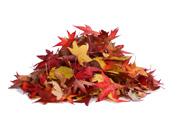
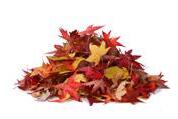


19 July 2023
Goodbye Junk. Hello Relief. 1-800-468-5865 Trusted Junk Removal Since 1989 Reiki, Jewelry AURA Photos Psychics, Tarot, FREE Raffles Crystals, Henna, FREE Lectures w w w . S p i r i t u a l F u s i o n s . c o m W h e r e R e a d i n g s A r e O N L Y $ 2 0 C O N V E N I E N T L Y L O C A T E D A T T H E C O L U M B I A M E T R O P O L I T A N C O N V E N T I O N C E N T E R 1 1 0 1 L i n c o l n S t r e e t , C o l u m b i a , S C 2 9 2 0 1 $ 9 c a s h a d m i s s i o n ( k i d s u n d e r 1 2 f r e e ) 1 0 : 0 0 - 6 : 0 0 p m PSYCHIC ARTS EXPO JULY 29-30, 2023 Columbia, SC SPIRITUAL FUSIONS
Hues of Health BENEFITS OF A COLORFUL DIET
by Veronica Hinke Dwayne Watson/ShutterStock.com

Eating plant-based foods from every hue in the rainbow provides an exceptional array of health benefits. Rich in essential vitamins, minerals and fiber, vibrantly colored fruits and vegetables also contain phytonutrients such as antioxidants, flavonoids, carotenoids and polyphenols that contribute to the color, flavor and aroma of such foods. There are thousands of phytonutrients and, according to a 2022 review of clinical studies published in Nutrients, these natural chemical compounds “play an important role in the prevention of serious chronic diseases such as diabetes, obesity and hypertension, along with different types of cancer or degenerative diseases.”

From a culinary perspective, colorful, plant-based foods add pops of color and flavor to a dish, and simple techniques can transform uber-nutritious fruits and veggies into crave-worthy delights. From tasty spreads and luscious dressings to pungent pickling recipes and rich soups, eating the rainbow can be a scrumptious and sustainable everyday lifestyle.
Keeping a medley of wholesome choices in the house is a good tactic to help a family adopt a rainbow-based diet. According to Registered Dietitian Olga Kras, “Not any single fruit or vegetable provides all of the nutrients we need. Making a variety of colors of fruits and vegetables visible increases the likelihood that they will be part of a daily routine.”
When her children were younger, instead of giving them sugary treats, she would cut fruits and vegetables into shapes with cookie cutters. “They loved opening their lunch boxes to find the fun shapes,” she recalls, noting the allure of visually pleasing treats. As the first-century Roman Apicius said, “We eat first with our eyes.”
According to Sarah Stegner, co-owner and chef of Prairie Grass Cafe, in Northbrook, Illinois, “Food is medicine. It is what lifts us
20 Columbia Edition ColumbiaNaturalAwakenings.com conscious eating
up. When we allow ourselves to get rundown or we are tired, that is when we are the most vulnerable, and we reach for that highly processed, packaged thing. That’s when we compromise, and compromise leads to long-term illness.”
Stegner compares food shopping to a trip to an art store for the artist that is about to paint a rainbow. “Center yourself,” she counsels. “Don’t put anything into the cart that shouldn’t be eaten. The key word is choice. If people don’t understand and realize what the choices they have are—for example, what herbs are and how to use them—then that is not a choice for them when they go home to cook a meal.”
“It’s just fun to have foods that are colorful,” says Erin Hoogendyk, a cooking instructor at Grebe’s Chef Center, in Wausau, Wisconsin, whose favorite flavor accents are onions, lemons and limes, as well as a panoply of herbs, including basil, rosemary, chives, parsley and mint. To add color and nutrition to everyday salads, she tosses in blueberries or dresses them with homemade vinaigrettes made with strawberries and balsamic.
Hoogendyk recommends farmers markets, individual farm stands and community-supported agriculture subscriptions to discover the freshest, in-season ingredients. When it comes to cooking and putting meals together, a sense of adventure and enjoyment is paramount, she says. Her coleslaw recipe includes red and green onions, radishes and red cabbage. “I don’t like coleslaw to be boring,” she quips, adding that her next project is to pickle an ingredient she has never pickled before: celery. “I can’t wait to see how it turns out.”
For those wanting to optimize their rainbow-based diets, “testing can help people understand how to best support their biology and determine what their bodies need,” says Dr. Véronique Desaulniers, a chiropractor and author of Heal Breast Cancer Naturally. She recommends the DNA test kit and whole-body health report from Nutrition Genome to pinpoint which foods to enjoy or avoid, depending on genetic weaknesses. Close monitoring of blood sugar levels is also important, she notes, as daily glucose and insulin spikes “can turn on cancer-causing genes and cancer-causing pathways.”
Veronica Hinke is a food historian and author of The Last Night on the Titanic: Unsinkable Drinking, Dining and Style. Learn more at FoodStringer.com.
CHEESY CAULIFLOWER MUSHROOM STEAKS
This dish can be served as a meal or cut into smaller pieces and presented as party appetizers. Cauliflower provides vitamins B6 , K and C, magnesium and fiber. It is also a great source of glucosinolates and isothiocyanates, two types of antioxidants that have been shown to slow the growth of cancer cells.
Button mushrooms are a source of vitamin D, selenium, phosphorus and folate. They also contain polysaccha rides, indoles, polyphenols and carotenoids, which are associated with cancer-fighting properties.
YIELD: 4 SERVINGS
4 slices of cauliflower, ¾-inch thick
1 tsp cooking spray
4 tsp olive oil
1 Tbsp dry Italian seasonings
2 cups fresh brown button mushrooms, sliced
2 fresh garlic cloves, minced
1 cup shredded mozzarella cheese
½ tsp sea salt
½ tsp freshly ground black pepper
½ tsp red pepper flakes
1 Tbsp fresh thyme for garnish
Preheat the oven to 400º F and spray two large baking sheets with cooking oil. Place the cauliflower slices onto one o baking sheets. They need lots of space between them and shouldn’t overlap. Brush each side of the cauliflower steaks lightly with the olive oil and season with sea salt, pepper and Italian seasonings. Roast 20 to 25 minutes, flipping once, until both sides are golden brown.
In a mixing bowl, add mushrooms, minced garlic, a pinch of sea salt and pepper, then toss to coat well. Spread the mushroom mixture on the other oil-sprayed baking sheet and bake for 10 to 15 minutes in the preheated oven. As an alternative, sauté the mushroom mixture in a medium pan with 1 teaspoon of oil over medium-high heat for 5 to 6 minutes.
Once done, remove the pans from the oven. Sprinkle roasted cauliflower steaks with cheese and top the cheese with the roasted or sautéed mushrooms and garlic mixture. Return to the oven for 2 to 3 minutes until cheese is melted and bubbly. Sprinkle with fresh thyme and enjoy.


Recipe and photo courtesy of Jennifer Carden

21 July 2023
SUMMER BROCCOLI SOUP WITH HERB CROUTONS

This vibrant, lime green-colored soup is an excellent source of potassium, fiber, vitamins B6 and C, iron, magnesium and calcium. It also contains several phytonutrients, including the carotenoids lutein, zeaxanthin and B-carotene, as well as tocopherols. For the croutons, choose a healthy bread, such as sprouted whole grain, gluten-free, almond flour or flax loaves.
YIELD: 2 TO 6 SERVINGS, DEPENDING ON PORTION SIZE
FOR SOUP:
6 cups broccoli florets, chopped

2 cups vegetable or chicken stock
1 generous pinch of sea salt
1 pinch of chili pepper flakes
3 Tbsp butter
FOR CROUTONS:

1 cup diced bread
2 Tbsp melted butter
½ tsp fresh thyme, chives or other fresh garden herbs, minced

Bring the stock to a boil. Add the sea salt and chili flakes. Add the broccoli and cook
until fork tender and bright green. Transfer to a blender, add butter and blend well. Taste and adjust seasoning. Serve with aged cheddar cheese and croutons.
To make the croutons, toss the diced bread in a bowl with melted butter, salt and fresh herbs. Spread the bread in an even layer on an oven-safe pan. Bake at 350º F and toast until lightly browned, about 5 minutes.
22 Columbia Edition ColumbiaNaturalAwakenings.com
Bowonpat Sakaew|Shutterstock.com
Recipe and photo courtesy of Sarah Stegner.
MARINATED BEETS AND GOAT CHEESE CROSTINI
Deriving their deep-red color from phytonutrients called betalains, beets are rich in nitrates, which help to lower blood pressure. They also provide calcium, folate and fiber. The pistachios in this recipe contain potassium, fiber, vitamins B6 and C, iron, magnesium and calcium.
YIELD: 6 SERVINGS
1 lb mixed-color baby beets

1 cup orange juice
1 cup apple cider

1 cup honey
1 sprig fresh thyme
1 pinch sea salt
1 pinch grain mustard
3 oz goat cheese
2 Tbsp herbs (chives, basil, mint), chopped
3 oz olive oil
3 oz chopped pistachios
1 toasted baguette, sliced
Remove the beet tops and reserve for other uses. Boil the beets in salted water until tender. Allow to cool slightly and rub the skin off the beets. Using an old dish towel will help the skin come right off.
Mix the vinegar, honey and orange juice in a bowl. Add the thyme and mustard. Add the beets, cover and allow them to marinate in the refrigerator for at least 2 hours.
Place the oil, sea salt, herbs and pistachios in a blender. Pulse until slightly pureed and chunky.

To assemble the crostini, remove the beets from the marinade and slice. Spread the goat cheese onto the toasted baguette slices and top with the beets. Drizzle the pistachio sauce on top and serve.
Recipe and photo courtesy of Sarah Stegner.

23 July 2023
Edward Westmacott|Shutterstock.com
THE MICROBIOME CONNECTION
HOW SOIL AND HUMAN HEALTH ARE RELATED
by Kelcie Ottoes
The human gut microbiome, which is critical to fighting off disease, and soil microbiome, which enables plant growth, are vitally important to maintaining all life on our planet. These two communities of microorganisms are indirectly connected in important ways, and researchers are trying to find out more about their interplay.
Human Microbiome
The human gut microbiome consists of trillions of microorganisms of different species. These microbes help to digest food, synthesize vitamins and other important compounds, regulate our immune system and even influence behavior and mood.
The gut microbiome includes both helpful and potentially harmful microbiota that coexist peacefully in a healthy person. But certain diets, or the use of antibiotics or other bacteria-destroying medications, can upset the balance, a state known as dysbiosis, which can impair the microbiome’s functions, leaving the body susceptible to disease.
Soil Microbiome
The soil microbiome has many parallels to the human gut scenario. It consists of bacteria, fungi, archaea and viruses—microorganisms that play an important role in maintaining the health of the soil. They do this by breaking down organic matter, cycling nutrients and protecting crops against harmful pathogens.
Regenerative organic farming practices that promote biodiversity and disdain the use of chemical pesticides and fertilizers develop robust soil that is rich in nutrients and beneficial microbes. In such settings, farmers don’t need to use chemicals, because the microbiome creates disease-resistant soil to fight off threats.

The Nutrition Link
While a direct link between the soil microbiome and the gut microbiome has yet to be proven, soil certainly impacts our health through our diet. A diverse and active soil microbiome is responsible for supporting plant growth. Plants then provide us with the nutrients that our gut microbiome needs to thrive, including calcium, magnesium, and vitamins A, C, E, K and the B complex.
Dan Kittredge, founder of The Bionutrient Institute, explains, “The sophistication of the soil microbiome is connected to the nutritional value of the food that’s produced. The healthier the [soil] microbiome, the healthier the food.” The use of fertilizers and pesticides does not directly produce less nutritious food, but rather their impact on the health of the soil microbiome can impact the crops’ nutritional value.
There is a hypothesis that food has become less nutritious since the mid-1900s. In a 2004 study, University of Texas scientists examined the nutritional value of 43 garden crops from 1950 to 1999 and found that while all 43 foods showed a statistically reliable decline in nutrition, it was likely due to cultivating plants with desired traits, such as larger sizes, faster growing rates and increased pest resistance. It wasn’t the soil that was the problem, but that growers had not prioritized breeding crops for higher nutritional value.
24 Columbia Edition ColumbiaNaturalAwakenings.com
Photo by Rodale Institute
According to Jack Gilbert, a pediatrics professor at the University of California San Diego and co-founder of the Earth Microbiome Project and the American Gut Project, “There is an indirect relationship between a healthy soil microbiome and healthy gut microbiome. While we need healthy soils to grow plants, a healthy soil microbiome does not equal a healthy gut microbiome.”
He explains, “The link is really about diet in the gut microbiome. Precision nutrition is the idea that how we all respond to food is unique, and that we can predict those responses if we understand what kinds of bacteria are in the gut. This is because the gut microbiome varies between people, and those same gut microbes can mediate how food influences our physiology. Eating a healthy diet can have a profound impact on reducing the risk of developing chronic diseases.”
The nutritional value of food is more complicated than the quality of the soil in which the crops grow. It is also impacted by the processing of the food. As Kittredge notes, when the bran in wheat is removed—a common process that turns flour white— wheat loses much of its nutritional value. Unprocessed foods allow us to access more of the nutrients within them.
Digging in the Soil
There is another way that soil microbes can benefit human health: spending time in nature. Exposure to the soil microbiome has been shown to stimulate the immune system. When outside, we are exposed to a diverse array of microorganisms that increase disease
resistance and provide neurological benefits.
Gilbert has largely built a career on the benefits of getting his hands dirty. He is currently conducting a study to find out how giving children two hours of outdoor learning a day can impact their metabolic health and help them avoid diseases. According to Kittredge, playing in the dirt isn’t just for kids. “It is beneficial to expose ourselves to soil microbes,” he says. “Everyone should nature bathe.”

“Exposure to soil microbes, like Mycobacterium vaccae, can positively impact our physical and mental health,” says Kathleen DiChiara, a Functional Diagnostic Nutrition practitioner and digestive wellness educator. “We are losing diversity and not getting the exposure we used to.” She points out that the gut microbiomes of urban citizens in the U.S. have lower bacterial diversity than those in rural societies, including hunter-gatherers from Tanzania and the Amazon.
While diet, lifestyle and genetics play a role in the host-specific differences, the microbiome composition in adults is also based on exposure to microbes in the environment. According to DiChiara, there is no perfect profile for the gut microbiome, and our gut microbial communities ebb and flow. “If a specific strain of bacteria suddenly disappears, perhaps due to an illness, another species can take on its task,” she explains. “Like nature, it’s about working together on our behalf.”
Diversity, richness and symbiotic behavior of the gut microbes are central to our well-being. DiChiara notes that many variables can negatively impact the gut microbiome. Some result from the
25 July 2023
choices we make voluntarily, such as smoking, drinking too much alcohol, eating ultra-processed foods, being chronically stressed and leading a sedentary lifestyle. Other factors are beyond our control, such as neurological injuries, illnesses and hormonal shifts due to puberty or menopause.
Human Impact on Soil Health

The soil microbiome and the gut microbiome both need our support to maintain proper health. Although our gut microbiome may not be directly impacted by the health of soil microbes, it can be impacted by the pesticides, herbicides and fungicides in our food. Degradation of the soil microbiome occurs in many ways. Tillage, bare soil, dry soil, fertilizer, chemical sprays and fungicides all harm the soil microbiome. These non-regenerative agricultural practices can have negative impacts on the health of individuals that eat the plants and on the health of the broader ecosystems.
Chemicals like glyphosate can damage the gut microbiome by creating oxidative stress, which agitates the microbiome and impedes its ability to function properly. Pesticides can also have a detrimental impact on the gut microbiome. Each year the United States uses 1 billion pounds of pesticides that may be damaging our bodies when we eat our veggies. “What we are not doing is prioritizing protecting the microbiome—for us and the soil. It’s time we recognize the interconnections between climate, soil and the gut,” DiChiara says.
There are multiple ways we can cultivate a closer, healthier relationship between our soil and our gut, such as supporting sustainable agriculture, avoiding processed foods, frequenting farmers markets for organic produce or spending time in nature. Better yet, Kittredge suggests planting a pesticide-free garden at home and eating carrots straight from the soil.
Kelcie Ottoes is a copywriter and content creator specializing in sustainability and environmental topics.
The Promise of Regenerative Organic Agriculture


Led by the Regenerative Organic Alliance, which includes organizations and brands like Rodale Institute, Dr. Bronner’s and Patagonia, the Regenerative Organic Certified farms and products meet the highest standards in the world for soil health, animal welfare, and farmworker fairness. The idea is to create farm systems that work in harmony with nature to improve quality of life for every creature involved. The Regenerative Organic Certified framework is designed to go above and beyond the USDA Certified Organic seal. To date, 134 farms and more than 47,000 smallholder farmers totaling almost 880,000 acres are Regenerative Organic Certified. Nearly 100 brands offer Regenerative Organic Certified products on the market. Under Regenerative Organic Certified standards, soil health is promoted by including a variety of rotating crops, cover crops, no tillage, no synthetic inputs, no genetically modified seeds and rotationally grazed animals. Farms that follow these protocols become biodiverse ecosystems with organically rich soil that absorbs water, does not erode over time and produces safe, nutritious food. Learn more at RegenOrganic.org.

26 Columbia Edition ColumbiaNaturalAwakenings.com
Photo by Rodale Institute
Photo by Rodale Institute
Photo by Rodale Institute
Natural Ant Control for the Home

The warmer weather can bring unwanted pests, including ants, into homes and apartments Conventional pesticides and ant traps can be toxic to humans, pets and the environment. This season, consider using one of these safer ant-control alternatives.
KEEP COUNTERS CLEAN
First and foremost, maintain kitchen counters and floors free of food particles. Tightly seal food containers, wipe countertops with soapy water, sweep the floors and avoid leaving standing water overnight. If there are no food sources around, the ants will lose interest.
STOP ENTRY INTO THE HOME
After cleaning, the next line of defense is to keep ants from entering the home in the first place. One of the most effective, toxin-free methods is to spray cedar oil outside, around the perimeter of the house. Mix one ounce of cedar oil in one quart of water (or four ounces per gallon) and
spray the solution three feet up the outside walls and on the ground, six feet out from the edges of the house.
USE NATURAL REPELLENTS
Numerous natural repellents work well inside the home. Place one or more of these in the kitchen or wherever the ants are entering: cucumber peels or slices; tea bags of mint tea or dry, crushed mint leaves; cloves; cayenne pepper; citrus oil soaked into a piece of string; lemon juice; cinnamon; or coffee grounds.
CONFUSE ANTS TRAVELING BACK TO THE NEST
As worker ants travel from their nest to forage for food, they leave a sex hormone (pheromone) scent in order to find their way back to the nest. These invisible trails can be washed away with a mixture of one-quarter cup of white vinegar, two cups of water, and 10 to 15 drops of peppermint, clove, eucalyptus or tea tree essential oil.
USE NATURAL ANT KILLERS AS LAST RESORT
A serious ant problem might require more drastic measures that kill the invading ants. These two options employ non-toxic ingredients.
n Diatomaceous earth is a non-toxic, talc-like powder made from the fossilized remains of marine phytoplankton. When sprinkled on ants, the powder causes them to dehydrate.
n Cornmeal left out in small piles where ants are visible is another option that poses no threat to pets or little kids. The ants will eat the cornmeal, but because they can’t digest it, they will perish.
27 July 2023 eco tip
Joel/AdobeStock.com
Gut Health for Kids
CLEVER STRATEGIES FOR PICKY EATERS
by Sheila Julson
Most kids look forward to summer vacation, but the dog days can eventually lead to boredom and over-snacking. By creatively offering children healthy, diverse foods, presented in ways to please even finicky palates, parents can support microbiome health while establishing a lifetime of good eating habits.
Tickle Their Palate
“Foods with probiotic-containing living cultures or fermented foods can add beneficial bacteria to the gut,” says Jill Castle, a Massachusetts-based pediatric dietitian and founding CEO of The Nourished Child, an online nutrition resource for parents. She recommends incorporating treats that are alive, tart and bubbling with healthful microbes.
“Parents can make sure they offer a variety of prebiotic and probiotic foods routinely at mealtimes as options to taste and try. The good news is there are many healthy, gut-supporting foods for children to eat,” she advises.
Yogurt with live or active cultures and kefir, a fermented milk drink, both contain these beneficial probiotics. “Although kefir tends to be sour, some brands have flavored kefir, such as strawberry, mango or

peach,” Castle explains. “I’ve had great luck introducing this to children who are picky, because it’s smooth and creamy and tastes like a smoothie.”
She also notes that kombucha, a fizzy, fermented tea with live and active cultures, is available in fruity flavors that appeal to children. Pickles fermented over time with salt and water are a source of healthy bacteria for the gut. And although cheeses are fermented, only a few have live, active
28 Columbia Edition ColumbiaNaturalAwakenings.com healthy kids
Vladislav Noseek/AdobeStock.com
cultures. Castle recommends gouda, mozzarella or cheddar.
Sneak in the Fiber
According to Dr. Joanne Aponte, a naturopathic doctor at Lakeside Natural Medicine, in Milwaukee, a diverse diet high in fiber is key to supporting a healthy gut microbiome. “All veggies are beneficial, but ones high in galacto-oligosaccharide (GOS) and fructo-oligosaccharide (FOS) prebiotics help grow and support healthy gut bacteria,” she explains. GOS-rich foods include beans, lentils and peas, along with broccoli, cauliflower and Brussels sprouts, while FOS-predominant choices are garlic, onions, asparagus, artichokes and leeks.
Aponte also recommends chia, flax, pumpkin and sunflower seeds, which can be ground up in an inexpensive coffee grinder and added to smoothies, oatmeal, yogurt or home-baked goods such as cookies, pancakes or waffles. “Sunflower butter can be used to make cookies,” Aponte notes. “I make oatmeal-sunflower butter cookies that are packed with microbiome-supporting oatmeal, pumpkin, ground chia seeds and, of course, chocolate chips.”
For children that are choosy about vegetables, Aponte suggests making zucchini or carrot muffins with ground chia seeds or walnuts. Entice children to eat raw veggies by offering dipping sauces, such as teriyaki, ranch dressing or salsa. Aponte notes that skins should be left on vegetables whenever
possible because they contain fiber, which helps feed the gut microbiome.
“It takes some experimentation, but encourage your child to try lots of different foods,” Aponte says. “Some kids might prefer a black bean spread or dip, or refried beans, versus eating whole beans. There are also pastas made with chickpeas or lentils. Veggies like onion or zucchini can be chopped small and hidden in spaghetti sauce.”
Add a Pinch of Fun
Katrina Lien, the program development specialist for Sanford fit, a children's fitness program in rural South Dakota, North Dakota and Minnesota, suggests that parents find ways to engage and empower kids to make healthy lifestyle choices.

“Try offering new foods with foods that you know your kids already like,” she says. “When you introduce something new or unfamiliar alongside foods that are a well-known favorite, kids are more open to trying the unfamiliar food.”

Attempt to make foods more interesting and fun, Lien advises. “This can be done by how you arrange the food items on the plate or cutting foods into different
shapes. For example, use a cookie cutter to turn simple cucumber slices into a heart or a star.”
According to Lien, when parents involve their children in snack and meal preparation, kids feel included and excited to try the foods they helped create. Although getting kids interested in unfamiliar foods can be laborious and time-consuming, parents should remind themselves to be patient and remain consistent.
Sanford fit offers free, online resources through printable literature, videos, lessons and games at fit.SanfordHealth.org.
Sheila Julson is a freelance writer and contributor to Natural Awakenings magazine.
29 July 2023
JPC-PROD/AdobeStock.com
Too Much Histamine
NATURAL SOLUTIONS TO AN EXCESSIVE ALLERGIC RESPONSE
by Carrie Jackson
Histamine is an organic chemical produced by the body as a protection from allergens. It is also found in some of the foods we consume. While certain levels of this compound are considered normal and healthy, an overabundance can cause troublesome symptoms—from runny noses and hives to intestinal discomfort and brain fog. Histamine intolerance, as this condition is called, is often caused by food triggers or the body’s inability to break down the excess histamine. Over-the-counter antihistamines promise short-term symptom relief but may have unappealing side effects. Long-term, drug-free resolution is possible
with a little sleuthing and holistic lifestyle adaptations.
A WIDE ARRAY OF SYMPTOMS
“Histamine intolerance can affect every area of the body, including the brain. The inflammation created by excess histamine often leads to brain fog and other neurological symptoms,” says Michael Ruscio, a naturopathic practitioner, doctor of chiropractic, clinical researcher and author of Healthy Gut, Healthy You.
Symptoms of histamine intolerance often start in the intestinal tract with diarrhea and bloating and contribute to leaky gut. “If the sensitive gut lining is damaged,

histamine can permeate to other areas of the body and lead to redness, swelling and itchiness, as well as respiratory issues, joint pain and anxiety. These seemingly unrelated symptoms can all have the same underlying cause, and patients, as well as many doctors, are not aware of these connections,” says Arti Chandra, a Seattle-based family practice physician who is certified in functional medicine and serves as faculty at the Institute for Functional Medicine.
KNOWING THE TRIGGERS
“Mast cells, a type of white blood cell, are responsible for releasing histamine and other chemicals that cause inflammation.
30 Columbia Edition ColumbiaNaturalAwakenings.com healing ways JEGAS RAr/AdobeStock.com
A histamine intolerance or exposure to high-histamine foods can lead to mast cell activation syndrome (MCAS), where they release excess amounts into the body. Typically, enzymes will break down the histamine so that it doesn’t build up, but if the body doesn’t have the proper level of enzymes to break it down or if too much histamine is being released, then persistent symptoms can occur,” Chandra asserts. Symptom management begins by healing the digestive system. “A healthy gut biome supports the body in producing one of the enzymes needed to break down histamine and can help lower inflammation,” she explains. “Dysbiosis, which is when the gut flora is out of balance, is often caused by the Standard American Diet, also known as SAD. Processed foods, fillers, chemicals, additives and other unnatural substances can all compromise the gut flora and gut function. Dysbiosis often leads to low levels of DAO [diamine oxidase], an enzyme in the gut that helps break down histamine. Some people can have a genetic basis for this—a mutation—that can also lead to excess histamine from impaired breakdown.”
SOLUTIONS FOR HISTAMINE OVERLOAD

Per Ruscio, “A simple, balanced, whole foods diet like the Paleo diet is a great starting point to calm inflammation and heal your gut. This means aiming for a variety of
vegetables, fresh fish, eggs, meat, nuts and seeds, and fruits in moderation. If symptoms continue, try a low-histamine diet.”
Chandra suggests avoiding processed and fast foods, gluten, dairy, sugar and artificial sweeteners. Foods that are naturally high in histamine, including aged cheese, fermented foods, cured meat, alcohol, caffeine and tomatoes, can exacerbate symptoms. She recommends eliminating triggers for three weeks and slowly reintroducing them one at a time to see which are still problematic. “As the gut biome becomes stronger, the body may naturally be able to tolerate high histamine foods better; eating a diet rich in prebiotic foods and sometimes taking an appropriate probiotic supplement can help with this,” she says.
Environmental factors can also trigger histamine reactions. “The body produces histamine to ward off substances like pollen, infections, chemicals and mold. Many people get what they think are normal allergies in the spring, with symptoms like runny noses, watery eyes and a scratchy throat. However, if these symptoms occur year-round, it could be a sign of a histamine intolerance or MCAS. Mold contains mycotoxins that are known to activate mast cells and lead to a histamine release. If someone is living in a building with mold and the exposure is continuous, it can lead to chronic inflammation and histamine issues. Proper air filters can help, but they ultimately may need to eliminate the mold or move out
of the environment,” says Chandra.
While over-the-counter antihistamine medications may help, they can have a sedating effect and other side effects, including cognitive issues. Natural and holistic treatments work just as well and are often better tolerated by the body, Chandra says. “Quercetin, found in apple skin and onions, can stabilize mast cells and make them less leaky, as can luteolin, both of which are available in supplement form and in Himalayan Tartary buckwheat. Vitamin C is a natural antihistamine, and omega-3 fatty acids found in fish oil or supplements have anti-inflammatory properties. Stinging nettles, another stabilizer, can be used as a tea or in supplement form. Spices such as curcumin are natural anti-inflammatories and a nourishing addition to any diet,” she advises.
Stress management can help reduce histamine reactions, too. “Stress can trigger mast cells, causing a release of histamine and other inflammatory chemicals, as well as causing dysbiosis and leaky gut,” Chandra says. “Breathwork and meditation, as well as restful sleep, can help reduce histamine intolerance symptoms, support the gut and contribute to an overall level of internal balance.”
31 July 2023
Carrie Jackson is a Chicago-based freelance writer and frequent contributor to Natural Awakenings magazine. Connect at CarrieJacksonWrites.com.
Protecting Pets From Lyme Disease
PREVENTION AND SYMPTOM MANAGEMENT TIPS
by Paige Cerulli
When the weather is nice and we crave outdoor adventures with our pets, we may not want to think about Lyme disease, but it’s a good idea to take precautions to avoid an infection. One bite from an infected tick could lead to troubling health concerns. Despite the risks, there is no reason to hide indoors, as there are numerous actions we can take to protect our animal companions from infection and to relieve their symptoms should they contract the ailment.
Disease Prevalence in the U.S.
According to Johns Hopkins Medicine, Lyme disease is spread by bites from blacklegged deer ticks or western blacklegged ticks that carry the disease-causing bacterium Borrelia burgdorferi. While cases have been reported in nearly every U.S. state, Lyme disease is most common in the Northeast, Upper Midwest and Northwest.
A 2018 study published in Environmetrics found that the prevalence of Lyme disease in dogs is getting worse in the Northeast and spreading into regions that weren’t previously considered to be high risk, including areas in North Dakota, Iowa, Illinois, Ohio, Michigan and Tennessee.
Symptoms in Cats, Dogs and Horses

Lyme disease affects animals differently.
Veterinarian Erin O’Leary, founder of Heal House Call Veterinarian, explains that cats with Lyme disease are asymptomatic. “We don’t see any symptoms in cats, so we don’t tend to test or treat for Lyme in cats,” she explains.
Canine Lyme disease is a different story. Per O’Leary, dogs often exhibit lameness that may shift among the legs. Fever and swelling in the joints are common. Dogs can also experience a serious kidney complication called Lyme nephritis that causes them to feel very sick, drink lots of water and urinate more. Two studies performed by IDEXX, a developer of diagnostic and software products for animals, revealed that dogs exposed to tick-borne diseases, including Lyme disease, had a 43 percent increased risk of developing chronic kidney disease.
According to the Cornell University College of Veterinary Medicine, horses with Lyme disease may experience weight loss, lameness that shifts among the legs, muscle tenderness, low-grade fever and swollen joints.
Preventing Tick Bites
Nicole Savageau, a veterinarian with The Vets, notes that pet owners can naturally reduce their pet’s risk of being bitten by a tick by keeping their yards in check. “Ticks prefer to live in areas with tall grass, weeds and leaf litter,” she says. “Keeping your yard tidy by mowing your lawn and removing
any dead leaves or debris can help reduce the number of ticks in your yard.”
Pet owners may also use food-grade diatomaceous earth, a non-toxic powder, to help kill ticks in areas where pets like to spend time. Several natural fly sprays, many of which help to repel ticks, are also available for horses.
Removing a Tick
It’s important to carefully inspect pets for tick bites after spending time outdoors. “If you can remove the tick within 24 to 48 hours of the bite, it won’t transmit Lyme disease,” O’Leary maintains. She recommends tools like the Tick Twister or a pair of tweezers to safely coax a tick from their pet. “If you can get down to where the head is inserted and squeeze that with tweezers, that’s the easiest thing to do,” she says.
Savageau suggests keeping pet hair trimmed short, which can make it easier to spot and remove ticks, and cleaning the bite site with soap and water or an antiseptic solution to prevent infection. It’s important to watch for signs of inflammation or infection, like redness, swelling or discharge. “If any of these symptoms appear, or if the pet develops a fever or lethargy, the owner should contact their veterinarian for advice,” she says.
Caring for an Infected Pet
According to O’Leary, the antibiotic doxycycline is the best available treatment for Lyme disease, and giving the pet a bit of turmeric to eat can relieve inflammation, though it is best to consult with a veterinarian regarding the most appropriate treatment options and dosages. To reduce a fever, soaking a towel in cool water and applying it around a pet’s paws and ears will help.
Savageau highlights the importance of feeding pets a balanced and nutritious diet that supports the immune system, as well as supplements and other natural remedies. “This may include adding probiotics and omega-3 fatty acids to their food to support gut health and reduce inflammation. Herbs like echinacea may help stimulate the immune system and support the body’s ability to fight infections,” she says, adding, “Always consult with a veterinarian before starting any natural or alternative treatment for pets, as some may be harmful or interfere with prescribed medications.”
32 Columbia Edition ColumbiaNaturalAwakenings.com
Paige Cerulli is a freelance writer in Western Massachusetts specializing in the health and care of pets.
natural pet Enna8982/AdobeStock.com
Green Exercise RECONNECTING WITH NATURE
by Cristina Parker
For some fitness buffs, it doesn’t feel like exercise unless they’re at the gym lifting weights, pedaling the stationary bike or hearing the grunts of others giving it their all. But there’s an emerging trend taking hold: green exercise. Prompted by a growing focus on reconnecting with nature, combined with the well-known benefits of physical exertion, outdoor workouts in natural settings and urban parks are all the rage. From daily walks around the neighborhood to calisthenics with the aid of a tree or yoga on the beach, the possibilities are delightfully endless for all ages and fitness levels. Medical pros are prescribing it for science-based reasons.
Green exercise is not exactly a new concept. In a 2013 review of studies published in Extreme Physiology & Medicine, researchers concluded that physical activity in a natural setting as opposed to an indoor gym is perceived as easier and more fun, thereby boosting motivation. They wrote, “The nature element may help achieve a greater intensity of exercise without perception of effort changing.” In other words, people walk faster outdoors yet paradoxically feel as though they’re kicking back.
The U.S. Department of Agriculture found a positive correlation between green space and health. People that spend time in nature often experience a reduction in stress, cortisol levels, muscle tension and heart rate—all of which are risk factors for cardiovascular disease. A 2021 study published in Frontiers in Psychology involving obese young people confirmed that exercising in nature led to improved stress recovery, enhanced attentional restoration and a reduction in negative emotions.
Exposure to sunlight is another ben-
efit. According to Dr. Natty Bandasak, a physical therapist and founder of The Myokinetix Clinic, in New Jersey, “Getting vitamin D from the sun is much more impactful than the vitamin D absorbed from ingestible supplements. Just 10 minutes spent outside first thing in the morning can really set the day in a good direction.”
To maximize the benefits of green exercise, Rajeshwari Reddy, a physical therapist in Maryland, suggests a few precautions. “If you have any kind of vision issues, you should exercise midday when there is enough light to keep yourself safe, and if you suffer from seasonal allergies, try to avoid areas with flowering plants or trees,” she explains. “Standard walking shoes are different from running shoes, and the body mechanics of different activities require different levels of shock absorption. These often-overlooked components of an outdoor exercise routine can go a long way to keep you safe, avoid unnecessary injuries and ensure you are having fun with your new program.”
After choosing a suitable time and location, the next step is deciding what exercises to do.
Dr. Christine Masterson, a physical therapist at Orlin & Cohen Orthopedic Group, in New York, says, “For those who desire supervision, joining a local walking or running group is an excellent option. Alternatively, for those who prefer independence, a self-paced exercise routine is recommended.”

Both Masterson and Bandasak describe bodyweight-supported exercises as a perfect outdoor-friendly, equipment-free workout. Moving against gravity uses the person’s weight as a natural form of resistance. As a result, no dumbbells or resistance bands are required. Pick a nice spot in the grass, on the sand or under a shaded treat and do sit-ups, heel raises, push-ups and squats.
Masterson suggests pairing calisthenics with walking. A sample routine could include a brisk walk to the park, followed by squats sitting and standing from a bench, then another brisk walk to a wooded area, followed by heel raises holding onto a tree trunk for balance. “In a bodyweight program, you can focus more on your form and movement pattern, then you can progress these exercises by increasing repetitions, rather than adding weights,” she notes.
Bandasak asserts that aerobic exercises like walking, jogging or hiking can be optimized by adding a grip challenge. “One factor strongly correlated with increased longevity is grip strength,” he explains. “Grip can be strengthened through your ability to hold onto objects like a pull-up bar at a playground or stable tree branch in nature. If those items are not available, just holding any heavy objects by your sides as you walk can be beneficial.”
A key, take-home message when beginning any green-exercise program is to keep an open mind. There are so many activities we can enjoy outdoors. Reddy considers green exercise anything that gets the heart rate going, which can include diverse activities like golf, gardening in the backyard or swimming in a lake.
While getting the blood pumping, remember to breathe in the fresh air, listen to the songbirds and soak up the summer sunshine. Masterson is a proponent of outside yoga to refocus the mind and deeply reconnect with our surroundings.
Cristina Parker, a researcher, health content writer, educator and clinician specializing in neurologic disorders, limb-loss rehabilitation and adaptive sports techniques, holds a doctorate in physical therapy.
33 July 2023 Ground Picture/AdobeStock.com
fit body
Join
will make your health
ENGAGE
Check out and post “What’s New”. Be Inspired, find opportunities, upcoming events & more
EXPLORE
& join 200+ RWH Topic Communities. Power Search centralized local & global knowledge & resources


LEARN
Your way from thought leaders and experts (curated articles, online webcasts, courses, live events

CONNECT
With your best matched, screened providers and organizations, plus like-minded members
HEAL
With top doctors & experts in live video Q&A. Plus get members-only discounts on their programs
FREE
Access to a vast growing catalog of courses. Plus, curate your own library to track your progress
DISCOUNTS
On top provider and expert services, healing programs, training, courses & products
SHOP
Top In-Hub thought leaders and missionaligned partner communities with exclusive benefits
You’re Invited!
the only all-in-one
Health Hub (an
and
We Inspire and Empower WELLthier Living – Happy. Healthy.
Planet. Purpose. Priceless lifetime, life-changing whole health benefits for less than the cost of a smoothie a week! Scan Here for Your Exclusive, Limited-Time Only LIFETIME MEMBERSHIP Your
experience
trusted online Whole
ecosystem of communities) with the Exclusive Experience that
well-being journey easier. REGENERATIVE WHOLE HEALTH HUB Together
People.
WHOLE HEALTH
+ + + + + + + +
ATTEND VIP FILMS & EVENTS
ACCESS ORGANIC FOODS










35 July 2023 Testosterone Therapy TRT | Medical Weight Loss | Sexual Health Anti-aging & Regenerative Therapies | Peptide Therapy Do you want to have more ENERGY, lose WEIGHT, have better SEX and live LONGER? Call today for your initial consult! 941.444.1441 gapininstitute.com Located in Sarasota, Florida Serve Nationwide SERIOUS SOMEONE GET ABOUT MEETING This summer, join the largest holistic, conscious, spiritual and green network dating site online. We invite you to become a member and feel the energy on our site from the moment you first log in. Join now at NaturalAwakeningsSingles.com TRY FOR FREE
calendar of events
To place a calendar/ongoing/classified event, email content to ColaPublisher@NaturalAwakenings.com. Entries must adhere to our guidelines and be submitted by July 12 (for August issue). Costs $20 for 35 words each month. Call ahead before attending events to avoid any cancellations or changes.
Dowdy Rudolph Chiropractic–We are open and spacing appointments consciously. We are sanitizing our office and waiting areas throughout the day and wearing personal protective gear. Call 803-376-6293 to schedule an appointment.
SATURDAY, JULY 1
Backyard Saturday–Go Birding–10am-noon. Through play, families can experience nature. Fun activities to do, cool biofacts to investigate, and an explorative hike through Saluda Shoals Park. Ages 0-7. Cost: $5 parking. Leo’s Landing, Saluda Shoals Park, 6071 St Andrews Rd, Columbia. Info/join mailing list: 803-772-1228.
Pop Up Cat Cafe–10am-1pm. With Cat Around Town. The Hideout in WeCo, 118 State St, W Columbia. Info/cost: 803-881-1044, HideoutInWeco.com.
FRIDAY, JULY 7
First Fridays with SC Artists–6-8pm. The Hideout in WeCo, 118 State St, W Columbia. Info/cost: 803881-1044, HideoutInWeco.com.
Paddle and Pint–6-8pm. Paddle the Lower Saluda River, enjoy the views and wildlife. After an hour on the water, sample delicious craft beers at the River Overlook. Weather and river levels permitting. Ages 21 and up. Cost: $47. Saluda Shoals Park, 5605 Bush River Rd, Columbia. Info: icrc.net.
SUNDAY, JULY 9
King’s N Things Brunch–The Hideout in WeCo, 118 State St, W Columbia. Info/time/cost: 803-8811044, HideoutInWeco.com.
WEDNESDAY, JULY 12
Healthy Juicing Class–1pm. Learn to juice our way to health. Free. Space limited; must preregister. Hyatt Park Recreation Center, 950 Jackson Ave, Columbia. Info/register: Contact Ms. Tracy at 833-678-7229 or OriginalOriginshw@gmail.com.
SATURDAY, JULY 15
Molly’s Bingo Brunch–The Hideout in WeCo, 118 State St, W Columbia. Info/time/cost: 803-8811044, HideoutInWeco.com.
TUESDAY, JULY 18
Sip and Plant–6:30-8pm. Shade Gardens. Cost: $45. Gardener’s Outpost, 1211 Franklin St, Columbia. Info: 803-851-1905, GardenersOutpost.com.
WEDNESDAY, JULY 19
Touch for Health Introduction Class–10am-3pm. Energy kinesiology and stress-relief tools. Cost: $155. IKC certified instructor Joy Lee Connor. Info/location: Contact Connor at 803-447-6499 or JoyLeeConnor@BellSouth.net.
Ask the Gardener Happy Hour–4-6pm. Free green thumb info. Gardener’s Outpost, 1211 Franklin St, Columbia. Info: 803-851-1905, GardenersOutpost.com.
FRIDAY, JULY 21
Sunset on the Shoals–6-8pm. Enjoy a one-hour paddle on the Saluda River and learn about the unique history of the area followed by a wine tasting. Trip is dependent on weather and river levels. Boats and all necessary equipment are provided. Ages 21
and up. Cost: $47. Saluda Shoals Park, 5605 Bush River Rd, Columbia. Info: icrc.net.
SATURDAY, JULY 22
Slip, Slide & Splash–11am-2pm. Cool off and have a blast with inflatable water slides, a new toddler area, a maze, access to the splash pad and food trucks. Participants must have an ICRC issued wristband to attend. Register online, at Crooked Creek, or on-site day of event. All ages. Cost: $15 ages 3 and up, $5 ages 2 and under. Melvin Park, 370-A Eptings Camp Rd, Chapin. Info: 803-3458113, icrc.net.
SATURDAY, JULY 29
Cooking with Mom–Noon-2pm. This Mommy and Me cooking class brings your kids into the kitchen with you for a fun and healthy experience. Cost: $65 for a parent and one child. Seven Oaks Park, 200 Leisure Ln, Columbia. Info: 803-772-3336, icrc.net. Comedy with Sam–The Hideout in WeCo, 118 State St, W Columbia. Info/time/cost: 803-8811044, HideoutInWeco.com.
plan ahead
FRIDAY & SATURDAY, AUGUST 4 & 5
Foot Savi No Tax Sale–Fri 10am-5pm, Sat 10am2pm. No tax on shoes, socks, compression hosiery, braces, orthotics, foot care products and bags. Foot Savi, 7001 St Andrews Rd, Ste 16, Columbia. Info: Call Owen at 803-479-7859.
ongoing events sunday
Eckankar–10-11am. Second Sundays. The Path of Spiritual Freedom is an active, creative, spiritual practice. Join us and share your insights as we explore various spiritual topics. Seven Oaks, 200 Leisure Ln, Columbia. Info/cost: Call Dee at 803749-2459 or visit ECK-SC.org.
Soundy School –10:30am. Every Sunday. Celebration through meditation, sound healing and more. Free. Held next to Jubilee! Circle, 6729 Two Notch Rd, Ste 80, Columbia. Info: Email Info@ JubileeCircle.com.
Unity of Columbia–11am. Every Sunday. A vibrant, spiritual meditation community. Free. Unity of Columbia, 1801 Legrand Rd. Info: UnityOfTheMidlands@gmail.com, UnityOfTheMidlands.org.
A Course in Miracles–Original Edition (ACIMOE)–4:30-6pm. Every Sunday. Study group via Zoom/phone. ACIM-OE is unedited and available as a free phone app. Donations are accepted. Watch introduction on YouTube with Rev. Joy Lee Connor, LMT. Info: Contact Connor at 803-447-6499 or JoyLeeConnor@BellSouth.net.
Health, Hope & Healing–6:30-7pm. Every Sunday. Join us for Ms. Tracy’s radio show debut on Kiss 103.1FM, discussing health and wellness issues from a holistic perspective. Email any health questions you would like to have answered on the
air. Info: Contact Ms. Tracy at 833-678-7229 or OriginalOriginshw@gmail.com.
Virtual Healthy Living Support Group–7pm. Every first and third Sunday. Virtual support group via Zoom. Uplift, support and encourage one another while making necessary changes for better health and wellness. Donations accepted. Info/register: Contact Ms. Tracy at 833-678-7229 or OriginalOriginshw@gmail.com.
tuesday
Grocery Store Walkthrough–Every Tuesday. It can be difficult to navigate which food choices are the best and healthiest for you and your family. Learn how to choose healthy food options and how to read and understand food labels with Kristen Turpen, of Radiant Holistic Healing. Info/times/to schedule your walkthrough: Contact Turpen at 839-207-0057 or RadiantHolisticHealing@hotmail.com.
Eternal Planning Zoom Meeting –7pm. Third Tuesdays. An overview of the many different options for traditional funerals, home funerals, cremations and burials. Learn how to prepare your family for the discussion that everyone wants to avoid...death. Email EternalPlanningSC@gmail.com to get Zoom information.
wednesday
Grocery Store Walkthrough–Every Wednesday. It can be difficult to navigate which food choices are the best and healthiest for you and your family. Learn how to choose healthy food options and how to read and understand food labels with Kristen Turpen, of Radiant Holistic Healing. Info/times/to schedule your walkthrough: Contact Turpen at 839207-0057 or RadiantHolisticHealing@hotmail.com.
A Course in Miracles Discussion Group–7:30pm. Every Wednesday. Lee McEachern leads this discussion. Free. Jubilee! Circle, 6729 Two Notch Rd, Ste 70, Columbia. Info: Email Info@JubileeCircle.com.
Ask the Gardener “Happy Hour”–4-6pm. First and third Wednesdays. Bring your plants, pictures and questions! Have one-on-one conversations regarding the science behind your specific needs and issues. Gardener’s Outpost, 1211 Franklin St, Columbia. Info: 803-851-1905, GardenersOutpost.com.
thursday
Garden Asana –8:15-9:15am. First and fourth Thursdays. Hosted by Mitchell Hughes, of Grass Roots Yoga. Cost: $15. RSVP by paying online via Venmo-MitchellCHughes. Gardener’s Outpost, 1211 Franklin St, Columbia. Info: 803-851-1905, GardenersOutpost.com.
Healthy Cooking Class–10:30am-noon. Every other Thursday. Learn to make and enjoy the healthier versions of the foods we love. Free; must preregister. Hyatt Park Recreation Center, 950 Jackson Ave, Columbia. Info/register: Contact Ms. Tracy at 833-678-7229 or OriginalOriginshw@gmail.com.
36 Columbia Edition ColumbiaNaturalAwakenings.com
Connecting you to the leaders in natural health care and green living in our community. To find out how you can be included in the Natural Directory, call 803-309-2101 or email ColaPublisher@NaturalAwakenings.com.
ACUPUNCTURE
THE ACUPUNCTURE CLINIC
William D. Skelton, DAc
620 Sims Ave, Columbia 803-256-1000 • SCAcupuncture.com
Bill Skelton is dedicated to helping people live happier, healthier, active lives with safe, gentle and effective techniques. He has 38 years’ experience and trained in the Republic of China. Call to schedule an appointment. See ad, page 19.
AESTHETICS
EXPECT CLARITY AESTHETICS

Angie Jewell
120 Kaminer Way Pkwy, Ste G, Columbia 803-348-8962
Our carefully crafted and customized holistic care plans include Environ skin care products, which utilize science to deliver real skin benefits, paired with treatment room modalities, such as PBM, LFS, RF, microcurrent, facial/ear reflexology, facial sculpting massage, and gua sha, to help our clients reach their skin goals. Consistent and positive results include luminous, smooth, taut skin with even skin pigmentation. It’s time to expect clarity!
AROMATHERAPY
EYE LOVE ME
Jenycez Woodard

EyeLoveMe9@gmail.com
EyeLoveMe.BigCartel.com
Eye Love Me is a brand that caters to the mind, body and spirit/soul. Our products simply assist with bringing one closer to their higher selves while educating and/or giving insight on the importance of self-love. We aspire to aid in healing internally and externally, so that when we elevate in frequency we have a superior "innerstanding" on how to restore ourselves in its entirety. It starts with you. We desire everyone to recognize and acknowledge their own individual purpose, so that they open themselves to receive ALL that brings light into their realities.
GARNER’S NATURAL LIFE
4840 Forest Dr, Ste 15-A, Columbia Trenholm Plaza, in Forest Acres
803-454-7700 • GarnersNaturalLife.com
Improve your level of stress, depression and mood with natural products from a locally owned family business. Our knowledgeable staff will guide you using aromatherapy for pain, anxiety, energy enhancement and more. We carry several brands of essential oils, including doTERRA. See ads, page 2 and back page.

CHIROPRACTIC CHIROPRACTIC WELLNESS CENTER INC
Dr. Shelly Jones, DC 5209 Forest Dr, Ste C, Columbia 803-771-9990 • DrShellyJones.com

Webster Technique certified, Dr. Jones provides family chiropractic care, health information and wellness resources to support the body’s natural ability to heal, allowing one to feel better and enjoy living a more active lifestyle! Call to schedule your appointment or discuss bringing our onsite chiropractic care and health-education services to your business, school or athletic team.
DOWDY RUDOLPH CHIROPRACTIC LLC
Dr. Dowdy Rudolph, DC 1444 Barnwell St, Columbia 803-376-6293 • DowdyRudolphChiro.com

Dr. Gerald Rudolph, DC, focuses on finding the root cause of your problems and not just treating your pain. He utilizes digital X-rays to help diagnose problems, spinal adjustments to stimulate proper movement of spinal and extremity joints, active therapeutic movement exercises to correct movement disorders, and spinal decompression to help relieve numbness and tingling down your arms and legs. Dowdy Rudolph Chiropractic also offers a state-of-the-art full-body lounge hydromassage table that can help you feel more rejuvenated and relaxed. See ad, page 10.

COLON HEALTH SPRING RAIN HYDROTHERAPY
Linda Salyer


120 Kaminer Way Pkwy, Ste H, Columbia 803-361-2620 • LSalyer@ymail.com
All disease begins in the colon. Constipation; slow, sluggish bowel; gas and bloating? A colonic will help to rid you of these problems. Colonics promote good digestion, help speed metabolism, help lower cholesterol, and help relieve joint pain. Linda Salyer is IACN certified and a retired nurse. Saturday appointments available with an additional small convenience fee. See ad, page 23.
FOOT CARE
FOOT SAVI
7001 St Andrews Rd, Ste A
Certified Board Pedorthist and Brace Specialist
803-781-1269 • FootSavi.com
With more than 30-plus years in the footcare/footwear industry, Sion Owen helps with a variety of issues, including gait analysis, foot assessments, custom orthotics, bracing and compression therapy, plantar fascia pain, neuropathy and fitting for therapeutic shoes for patients with diabetes, arthritis, painful bunions, callouses and hammer toes. Call to schedule an appointment! See ad, page 11.

HEALTH & WELLNESS
ABOUT YOUR HEALTH INC

120 Kaminer Way Pkwy, Ste J, Columbia 803-798-8687 • AboutYourHealthSC.com
Our main focus is health education and health-enhancing services. One-on-one nutritional counseling, Mild Hyperbaric Oxygen Therapy, Reams pH testing, parasite programs, aqua-chi footbaths, far infrared sauna, weight-loss programs, and thermography. Hard-to-find natural, organic, whole food nutritional supplements, raw foods and natural household items. See ad, page 12.
ORIGINAL ORIGINS HEALTH AND WELLNESS
Tracy R. Jacox • 833-678-7229
OriginalOriginshw@gmail.com
OriginalOriginshw.com
Ms. Tracy has over 30 years of experience in the medical field. The mission of Original Origins Health and Wellness is to educate, equip and empower the community to adopt a predominately whole food, plant-based lifestyle, which will improve and optimize your quality of life, health and wellness while preventing, delaying, reversing or eliminating chronic illnesses. Original Origins can assist you with maximizing your health and wellness holistically! Our wide range of services include health coach partnering, comprehensive health evaluations, comprehensive cooking experiences, and a comprehensive kitchen evaluation. Your health is your wealth! See ad, page 7.
37 July 2023
natural directory
When you start eating foods without labels, you no longer need to count calories.
~Amanda Kraft
HOLISTIC NUTRITION
RADIANT HOLISTIC HEALING
Kristen Turpen
Board-Certified Holistic Nutritionist




839-207-0057
RadiantHolisticHealth@hotmail.com
RadiantHolisticHealing.net
Kristen uses personalized nutritional therapy, herbal medicine, individualized nutritional supplements, stressmanagement techniques, assistance with detoxification, and lifestyle modification to help restore optimal bodily function and balance. All treatment plans are customized to each individual’s needs. “My goal is to help treat and heal the entire body from suffering caused by any illness. One’s health is an expression of the complex interchange between the physical, environmental, chemical, mental, spiritual, as well as emotional aspects of one’s life and being.”
See ad, page 39.
HOLISTIC WELLNESS
NATURAL BEING HOLISTIC WELLNESS SPA & CENTER
1911 Barnwell St, Ste C, Columbia 803-708-8612 • nbhwsc.com

We are a very unique health and wellness center designed to help you discover a more natural and healthier way of living. Are you in need of a total detox? Do you want to rid your body of toxins or need to lose inches and burn 300 calories in 30 minutes? If you answered “yes” to these questions, then come embark on a healthy journey with us! Our extensive list of professional services includes foot detoxing, infrared sauna body wrapping, vaginal/yoni steaming, and vaginal rejuvenation. Owner and operator Sherino L. Maple is now offering complimentary consultations. Call today to book a consultation. See ad, page 5.
1 WITH NATURE THERAPIES
Amber Addy, CHHP
3937 Sunset Blvd, W Columbia 803-269-9835
1WithNatureTherapies@gmail.com
1WithNatureTherapies.com
Amber is a certified holistic healthcare practitioner and sees clients by appointment only. The first consult includes a study history and background, a physical exam, a urine test (RBTI), muscle testing and recommendations. Iridology and a Bach Flower consult are available upon request. Health services include, but are not limited to, homeopathic options. Other services include Traditional Chinese Medicine modalities, such as acupressure and reflexology, energy healing, TMP lamp, herbal recommendations, aromatherapy, and mud packing, among others. See ad, page 23.
INTEGRATIVE & HOLISTIC MEDICINE
EXPECT WELLNESS
Dr. Rachel Hall

130 Suber Rd, Columbia 803-796-1702 • DrRachelHall.com
ExpectWellness@sc.rr.com
Find us on Facebook for great health tips. Integrative/Holistic medicine consults for anyone wanting to approach their health more naturally. Dr. Rachel Hall is board certified in both family medicine and integrative holistic medicine. Together we will focus on finding the root of the problem, not just treating symptoms. Call today for a consult if you are looking to achieve balance. In-house diagnostic labs and therapies. See ad, page 3.

LOCAL RETREAT
JOY LEE CONNOR, LMT (SC#1229)


Healing Minster at Springhill AtONEment Center 803-447-6499
Joy has more than 30 years of experience in energy and bodywork. She teaches Reiki, Touch for Health, Meditation, Yoga, Ayurveda and A Course in Miracles. Joy welcomes and sees clients who are ready to shed guilt and limitations in favor of forgiveness and freedom. One hundred acres of trees surround this pristine location for healing at Springhill AtONEment Center. Nature walks and fireside gatherings available. Contact Joy at 803-447-6499.
PHILANTHROPY
SISTERS EMPOWERING EACH OTHER
Pamela Johnson, President P.O. Box 212404, Columbia 803-521-3036 • seeo2018@gmail.com
Sisters Empowering Each Other (SEEO) is a nonprofit organization founded by Pamela Johnson. Our mission is to fundraise monies in order to provide new full-sized personal hygiene packages to women who are homeless and/or abused. The women and children included may reside in shelters or transitional homes. SEEO motto: Being a Servant for the Lord. Ways to donate: Cash app –$seeo20180; PayPal–seeo2018@gmail.com; or mail check to address above. Contact Johnson to volunteer.
PREGNANCY/LACTATION
GRACEFUL BEGINNINGS BIRTH
Lindsay Millwood, CD 404-314-0363 • GracefulBeginningsBirth.com
As your doula, my goal is to provide you and your partner with the support, care, understanding and information you need throughout the birthing process. Beginning with natural birth education and assistance with birth plans through in-person prenatal appointments and birthing support, we will work together to achieve your birth goals. Postpartum services include lactation care as well as
a functional assessment for ties and oral tethers. Birth photography is also available.
REIKI & WELLNESS
AND WELLNESS
MARTA NATURALS REIKI
Martha Kirby, Reiki Master and Spiritual Life Coach


Columbia Area
803-864-6259 • MartaNaturals.com
Everything is energy, as are our thoughts. We give them life, bad or good. Everything you need is within you to change and transform those negative thoughts. Let me help you unlock those secrets to become the best version of you. We offer mobile and virtual sessions. Call today to schedule your session or free consultation. See ad, page 22
PEACEFUL PAUSE HEALING
Malai Roper
Reiki Practitioner
Northeast Columbia 803-814-4001
PeacefulPauseHealing.com


Reiki is a Japanese healing technique that promotes relaxation and reduces stress and anxiety through gentle hand movements. Using the guidance of your unique needs, treatments include a blend of reiki, sound healing, gemstone heat therapy, and chakra balancing to recharge your energy field and repair any energy blockages. Schedule your healing session online today!
SPIRITUAL QUIET MENDING
Allison Leo, Spiritual Director 937-418-3167 voice/text


QuietMending@gmail.com
Spiritual Direction is a process that guides us in uncovering and revealing the eternal and infinite aspects of our True Nature as spiritual beings. Through it, we learn to find and trust our intuitive inner voice, thus allowing us to live freely as expressions of our authentic spiritual selves. It is a confidential, one-on-one (virtually or in-person) process that unfolds safely in the wise, experienced and compassionate company of a trained and certified spiritual director. Allison Leo is a certified spiritual director and Reiki practitioner. Call, text or email to schedule a free initial consultation.
UNITY OF COLUMBIA
1801 Legrand Rd
803-736-5766 • UnityColumbia.org
Unity is a positive, practical, progressive approach to Christianity based on the teachings of Jesus and the power of prayer. Unity honors the universal truths in all religions and respects each individual’s right to choose a spiritual path. Come join us for a Sunday worship celebration and meet some positive, uplifting people that live life abundantly. See ad, page 11.

38 Columbia Edition ColumbiaNaturalAwakenings.com
Connect with us naturally!
THERMOGRAPHY

ABOUT YOUR HEALTH INC
120 Kaminer Way Pkwy, Ste J, Columbia 803-798-8687 • AboutYourHealthSC.com
Our main focus is health education and health-enhancing services. One-on-one nutritional counseling, Mild Hyperbaric Oxygen Therapy, Reams pH testing, parasite programs, aquachi footbaths, far infrared sauna, weight-loss programs, and thermography. Hardto-find natural, organic, whole food nutritional supplements, raw foods and natural household items. See ad, page 12.

VITAMINS & SUPPLEMENTS
GARNER’S NATURAL LIFE
4840 Forest Dr, Ste 15a, Columbia 803-454-7700 • GarnersNaturalLife.com

At Garner’s Natural Life, we offer the purest, most innovative highquality natural products. With more than 130 collective years of wellness experience! Allows us to encourage your healthy choices. See ads, page 2 and back page.

39 July 2023

40 Columbia Edition ColumbiaNaturalAwakenings.com























































 by Linda Sechrist
by Linda Sechrist

















































































